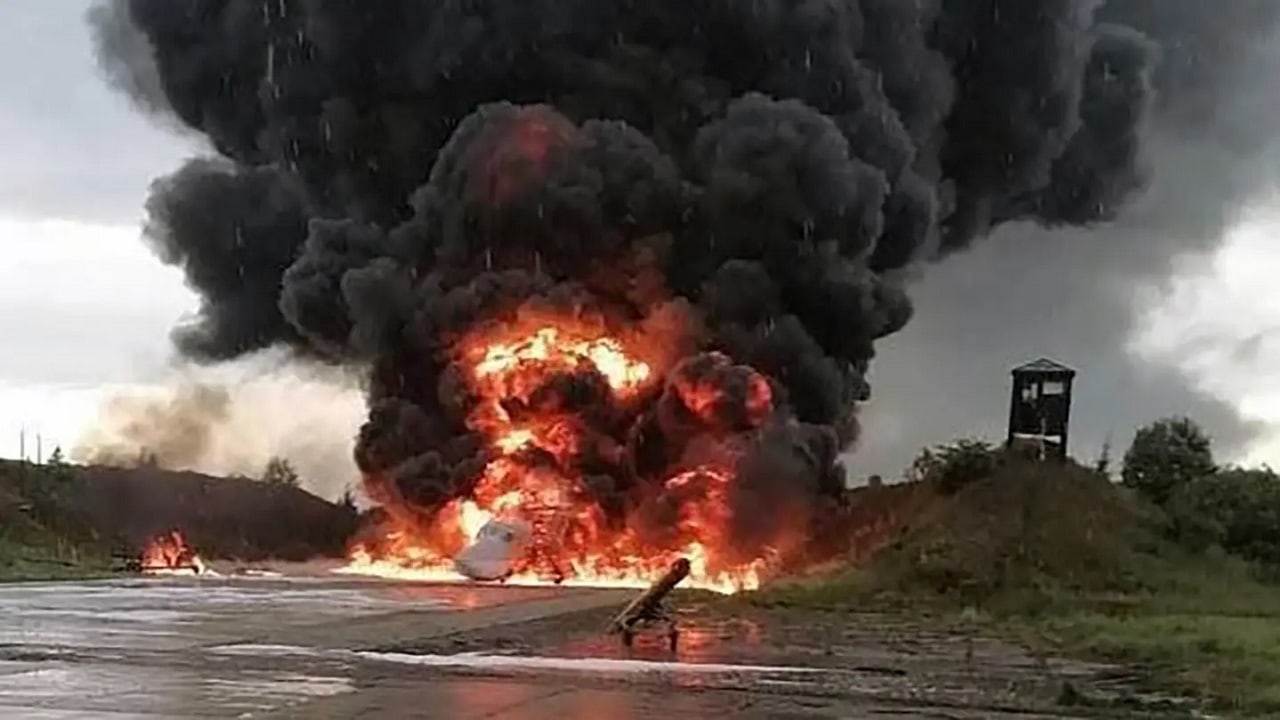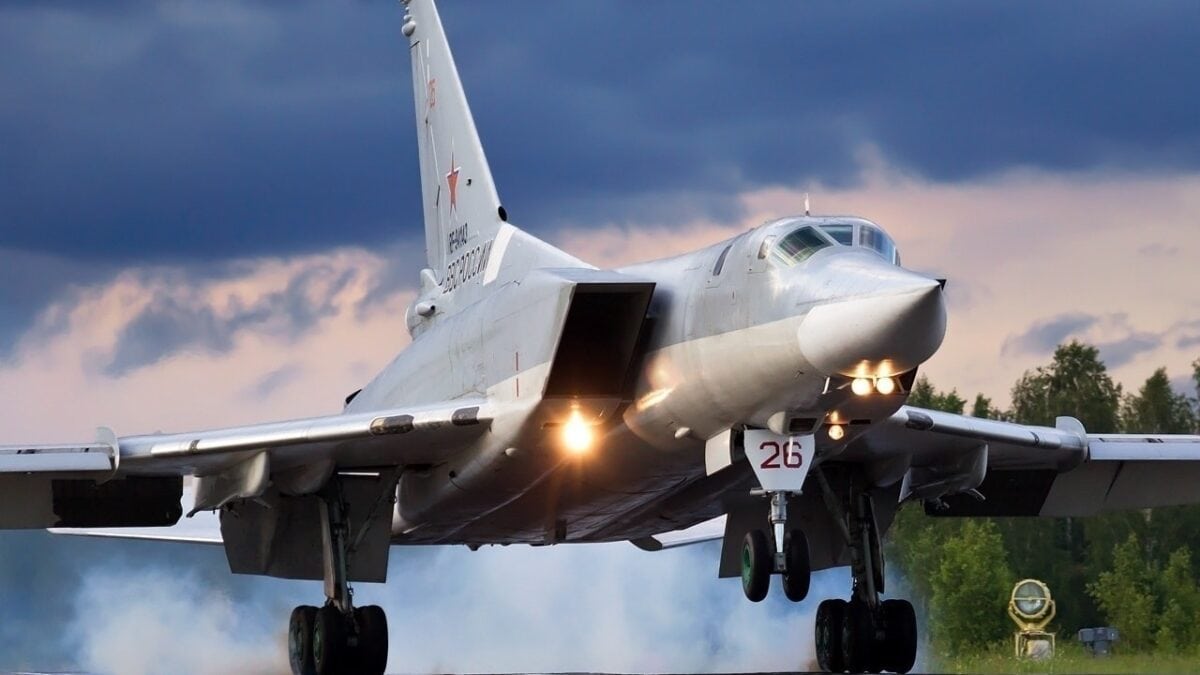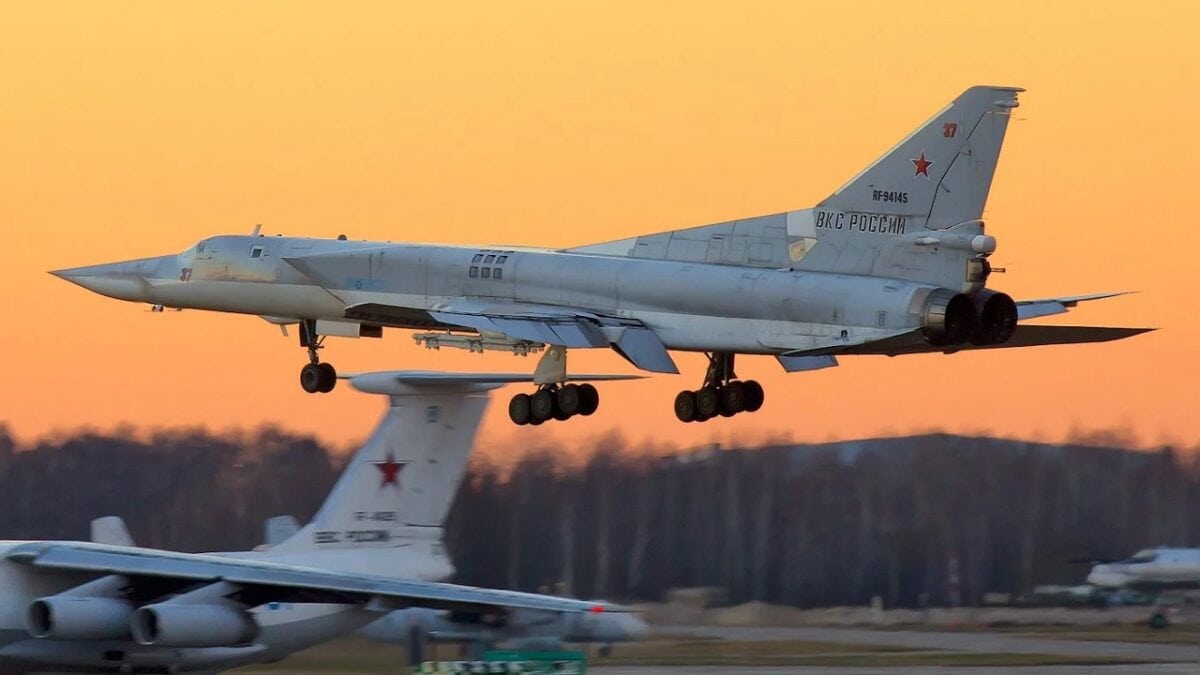David Hambling

Social media was rife with spectacular images of drone-borne destruction this weekend, showing a parked Russian Tu-22M Backfire strategic bomber completely engulfed in a fireball.
The destruction of one of Russia’s 60-strong Backfire force with one cheap drone is embarrassing enough for Russia, but the real problem is that was not just a daring one-off. Ukrainian drones are hitting Russian air bases again and again.
Drone Assault by Ukraine
In this latest incident, drones hit at least one aircraft on the tarmac at the Soltsy-2 airbase in the Novgorod region between Moscow and St Petersburg. The Tu-22M is a missile carrier and aircraft based in the region. The bomber regularly carries out attacks on targets in Ukraine with Kh-22 ’Kitchen’ missiles. Designed as an anti-ship missile in the 1960s, the Kh-22 was reactivated in the Ukraine war to attack land targets. Mach-3 speed and 200-mile range mean it can be launched outside the range of air defenses and is difficult to intercept, and it has been a valuable asset. Losing a launch aircraft will hurt.
According to a statement from Russia’s Ministry of Defense, the attacking drone was spotted by airbase personnel and brought down with small arms fire, but “a fire broke out in the aircraft parking lot on the territory of the airfield, which was promptly eliminated by fire brigades.” The statement claims that one aircraft was “damaged” and there were no casualties.
The images, shared by Anton Gerashchenko, adviser to Ukraine’s internal ministry, show that the aircraft was more than just damaged. The independent Telegram news channel Ateo Breaking claimed that two aircraft were hit in the attack, but images seen so far only show one.
Russian military commentators were quick to point out the lack of basic precautions at the airbase. Clearly, the drone should have been intercepted long before it was a danger to parked aircraft, but why was the bomber out in the open in the first place? While not every air base has a complete set of hardened aircraft shelters, a hangar would have prevented the aircraft from being spotted and targeted by the drone. A basic mobile shelter would have been sufficient, or even lightweight anti-drone netting often used in Ukraine to defend artillery positions.
In theory, providing a level of defense against small drone attacks should be fairly simple. But in the Russian military, even simple things are difficult.
History On Repeat
We know this because the real wake-up call came some time ago. In December last year, Ukrainian drones struck Russian military airfields Engels-2 in the Saratov region, Diaghilevo in the Ryazan region, and the third base at Halino, east of Kursk.
According to the Russian Ministry of Defense, all the drones were shot down but “as a result of the fall and explosion of their wreckage, the hull plating of the two aircraft was slightly damaged.” This exact result has been reported in this most recent instance. Peddling the line that the air defense was successful and damage was slight, even though they also admitted that three servicemen were killed. Images on social media showed a Tu-22M3 bomber with severe damage to one wing. Satellite images of the Engel base showed a Tu-95 that had been doused with firefighting foam, although the extent of the damage was not clear.
In February this year, partisans in Belarus damaged a Russian A-50 airborne radar aircraft at Machulishchy Air Base with a small drone. They went on to highlight their success by posting a YouTube video in which their quadcopter landed on the radar dish of the parked aircraft, apparently without being noticed by anyone at the airbase.
These incidents should have highlighted the risk. Having one aircraft damaged by a surprise drone attack is one thing, but once the threat is known, countermeasures should be in place. Second and third attacks should not be successful.
The Russian Air Force should have learned this lesson long ago, because it has been on the receiving end of small drone attacks since December 2017 when ten homemade drones bombed its Khmeimim air base in Syria. As usual, Russia’s Ministry of Defense claimed that all the attackers had been brought down by a combination of electronic warfare and Pantsir-S1 surface-to-air systems, but images on social media showed at least one severely damaged aircraft.

Drones attacked Khmeimim on several more occasions in 2018, even after Russia claimed it had destroyed the rebels’ drone-building workshop. Drones have continued at a low level ever since. By late 2018, satellite images showed that hangars had been built at the air base, and in 2019 protective shelters were in place. There have been no confirmed reports of damaged aircraft, but the MoD has mentioned injuries to personnel on the ground, despite their supposedly efficient air defenses.
This gives an indication of the nature of the problem. Tales about how every drone is shot down may not just be for Western consumption. Nobody in the Russian military wants to give bad news, and it is quite possible that all the way down the chain everyone is giving the message that everything is just fine and that everyone is doing their job. There might be the occasional mishap – including losing strategic bombers – but nobody wants to admit there is a systemic problem that needs addressing.
What happens next?
This attitude makes it difficult for senior commanders to identify problems and rectify them. We see exactly the same situation in Moscow where air defenses supposedly shoot down every incoming drone but falling debris still causes damage.

Ukraine is ramping up its production of long-range attack drones. They may only have a short time until Russia does finally start to coordinate its air defenses and learns not to leave aircraft parked in the open. They need to take maximum advantage of that window of opportunity while vulnerable, valuable targets are still on display.
No comments:
Post a Comment